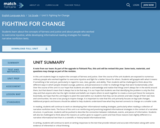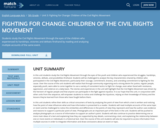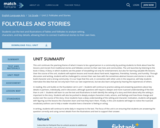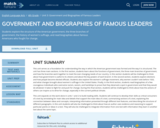
In this unit students begin to explore the concepts of fairness and justice. Over the course of the unit students are exposed to numerous ordinary people who worked together to overcome injustice and fight for a better future for others. Students will grapple with what it means if something is fair and just, particularly in regard to race, class, gender, and ability. Then students will be challenged to think about the different ways in which people showed courage, patience, and perseverance in order to challenge things that were fundamentally unfair. Over the course of the unit it is our hope that students are able to acknowledge and realize that things aren't always fair in the world around them, but that doesn't mean that it always has to be that way. It is our hope that students see that identifying the problem is only the first step and that anyone who has the right mindset and beliefs can inspire others to work together to create a more just future for everyone. Essentially, we hope that this unit begins to plant the seed within our students that they can be activists and take charge of their own lives and communities. No one is too young to inspire change. It is important to note that this unit primarily focuses on big-scale changes. Additional projects and lessons should be added to help students understand how what they learned connects to change on a smaller scale.
In reading, students will continue to work on developing their informational reading strategies, particularly when reading a collection of narrative nonfiction texts. The focus of this unit is on reinforcing and practicing targeted informational strategies in the context of a narrative structure. In particular, students will be pushed to describe the connection between individuals, events, and pieces of information. Students will also be challenged to think about the reasons an author gives to support a point and how those reasons look slightly different in a narrative informational text than in a scientific or history-based informational text.
In writing, students will continue to work on writing responses to the text that provide relevant and accurate information along with some evidence of inferential or critical thinking.
- Subject:
- Communication and Multimodal Literacy
- English
- Fiction
- Reading
- Writing
- Material Type:
- Assessment
- Homework/Assignment
- Lesson Plan
- Provider:
- Match Fishtank
- Provider Set:
- Fishtank ELA
- Date Added:
- 01/01/2017



